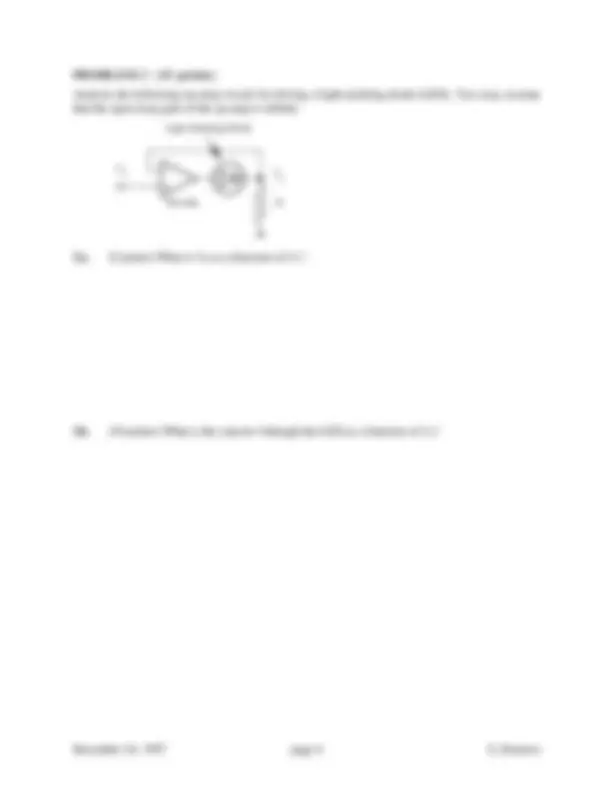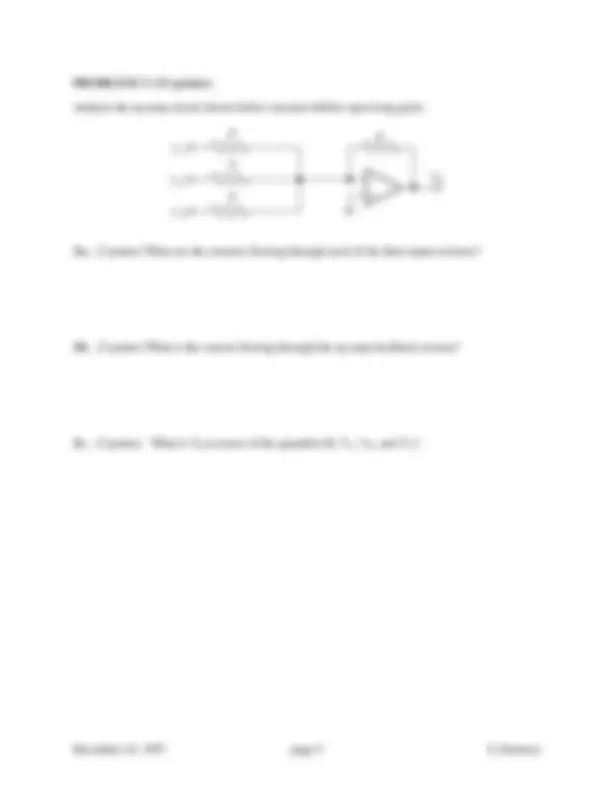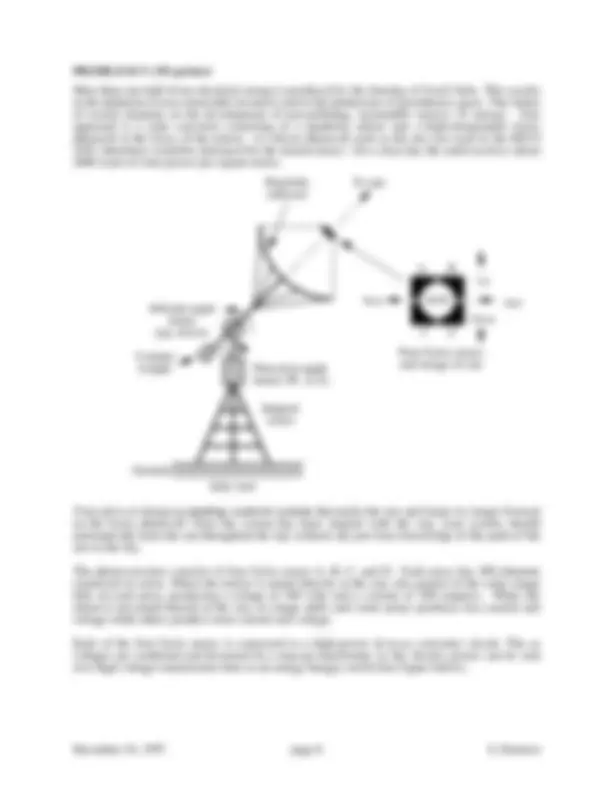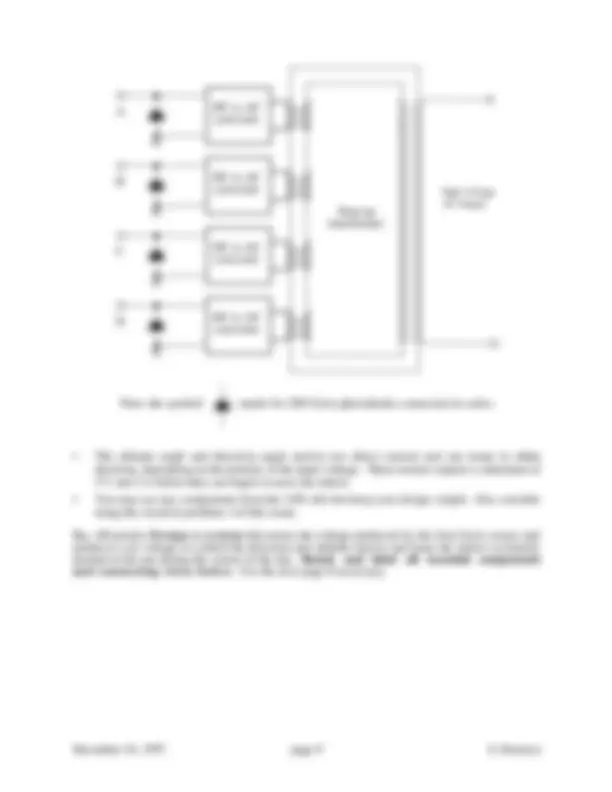








Study with the several resources on Docsity

Earn points by helping other students or get them with a premium plan


Prepare for your exams
Study with the several resources on Docsity

Earn points to download
Earn points by helping other students or get them with a premium plan
Community
Ask the community for help and clear up your study doubts
Discover the best universities in your country according to Docsity users
Free resources
Download our free guides on studying techniques, anxiety management strategies, and thesis advice from Docsity tutors
The final examination for the electronic transducer laboratory course offered by the university of california, department of electrical engineering and computer sciences. The exam covers various topics including op-amp circuits, thermocouples, and solar energy conversion systems. Students are required to answer multiple-choice questions and design circuits to solve problems. The exam consists of five problems, each worth different points, and the total points for the course are 1000.
Typology: Exams
1 / 10

This page cannot be seen from the preview
Don't miss anything!







NAME (please print)
College of Engineering Department of Electrical Engineering and Computer Sciences
EECS 145L: Electronic Transducer Laboratory
FINAL EXAMINATION December 18, 1997 12:30 - 3:30 PM
You have three hours to work on the exam, which is to be taken closed book. Calculators are OK, but not needed. You will not receive full credit if you do not show your work. Total points = 200 out of 1000 for the course.
1 ______________ (60 max) 2 ______________ (15 max) 3 ______________ (15 max)
4 ______________ (55 max) 5 ______________ (55 max)
TOTAL _____________ (200 max)
LAB REPORTS (500 points max): [5 short reports (lowest grade dropped)- 100 points max] [5 full reports (lowest grade dropped)-400 points max]
(500 max)
(100 max)
(100 max)
(100 max)
(200 max)
(1000 max)
PROBLEM 1 (60 points)
In less than 50 words, describe the essential differences between the following two items:
1a. (12 points) [Op-amp] and [Instrumentation amplifier]
1b. (12 points) [Sensor] and [Actuator]
PROBLEM 2 (15 points)
Analyze the following op-amp circuit for driving a light emitting diode (LED). You may assume
that the open-loop gain of the op-amp is infinite.
Op-amp R
Light Emitting Diode
V 1 V 2
2a. (5 points) What is V 2 as a function of V 1?
2b. (10 points) What is the current I through the LED as a function of V 1?
PROBLEM 3 (15 points)
Analyze the op-amp circuit shown below (assume infinite open-loop gain):
V 1
V 2
V 3
R
V 0
R
R
R
3a. (5 points) What are the currents flowing through each of the three input resistors?
3b. (5 points) What is the current flowing through the op-amp feedback resistor?
3 c. (5 points) What is V 0 in terms of the quantities R, V 1 , V 2 , and V 3?
4 c. (10 points) Sketch the thermocouple voltage Vtc as a function of the temperature difference ∆ T = T sens – T ref. Label the axes with numbers and units.
4d. (10 points) Sketch the platinum resistance circuit voltage Vpt as a function of the temperature Trm. Label the axes with numbers and units.
4 e. (10 points) Sketch your design for converting Vtc and Vrm into a voltage Vout , where Vout = Tsens (10 mV/C°), independent of room temperature.
PROBLEM 5 (50 points)
More than one-half of our electrical energy is produced by the burning of fossil fuels. This results in the depletion of non-renewable resources and in the production of greenhouse gases. The future of society depends on the development of non-polluting, sustainable sources of energy. One approach is a solar converter consisting of a parabolic mirror and a high-temperature GaAs photocell at the focus of the mirror. (A silicon photocell such as the one you used in the EECS 145L laboratory would be destroyed by the intense heat.) On a clear day the earth receives about 1000 watts of solar power per square meter.
Four GaAs arrays and image of sun
Counter weight
Parabolic reflector
Side view
Support tower
To sun
Direction angle motor (W, S, E)
Ground
Altitude angle motor (up, down) C D
Up
Down
West East
Your job is to design an analog control system that tracks the sun and keeps its image focused on the GaAs photocell. Once the system has been aligned with the sun, your system should automatically track the sun throughout the day without any previous knowledge of the path of the sun in the sky.
The photoconverter consists of four GaAs arrays A, B, C, and D. Each array has 200 elements connected in series. When the mirror is aimed directly at the sun, one-quarter of the solar image falls on each array, producing a voltage of 100 volts and a current of 100 amperes. When the mirror is not aimed directly at the sun, its image shifts and some arrays produces less current and voltage while others produce more current and voltage.
Each of the four GaAs arrays is connected to a high-power dc-to-ac converter circuit. The ac voltages are combined and increased by a step-up transformer so the electric power can be sent over high voltage transmission lines to an energy-hungry world (See figure below).
5b. (10 points) Describe how your system responds to the motion of the sun in the sky.